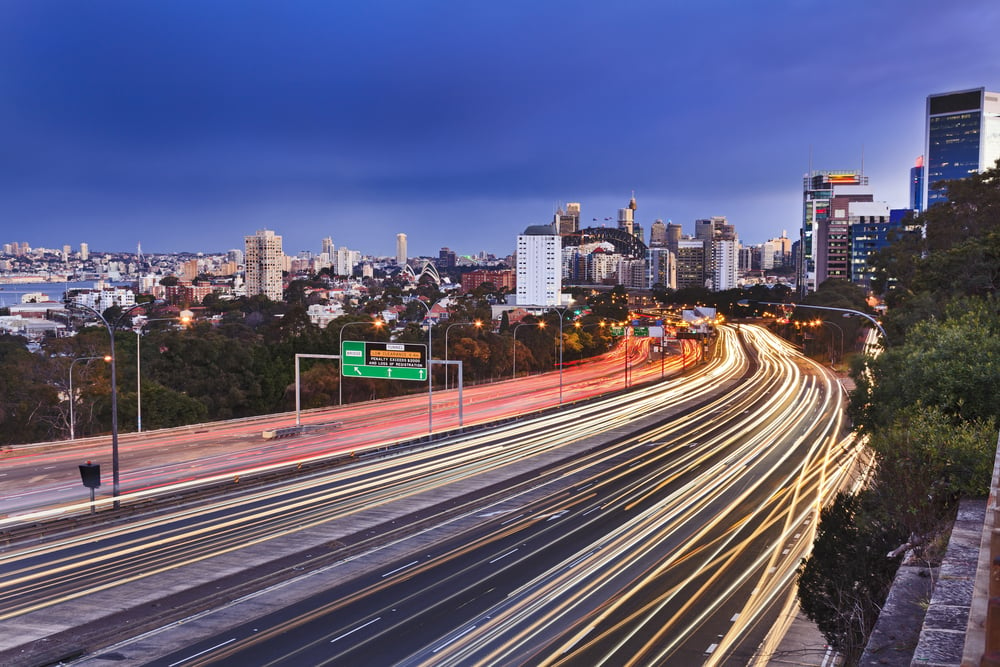
You’re driving home after dark when suddenly you’re hit by what feels like the sun itself—blazing white light that turns your rear-view mirror into a weapon of mass distraction.
If this sounds familiar, you’re far from alone in experiencing what’s become one of the most frustrating aspects of modern driving in Australia.
SUVs now represent 60.4 per cent of all new vehicle sales in Australia, up dramatically from previous years, and with this shift comes an unintended consequence: millions of drivers in smaller cars are being systematically blinded by the height and intensity of modern headlight technology.
The statistics tell a sobering story. Over 1.2 million new vehicles were sold in Australia in 2024, marking a record year for the automotive industry. But this growth isn’t evenly distributed across all vehicle types—it’s heavily skewed towards larger, higher-sitting vehicles that are fundamentally changing the driving landscape.
Modern light-emitting diode or LED headlights aren't inherently evil—they're actually a significant improvement over older halogen bulbs in many ways. They last longer, use less energy, and can provide superior illumination when properly designed and installed.
The problem lies in their intensity and how they're being implemented across an increasingly tall vehicle fleet.
'It's fine if they are concentrated, and they are technically meant to be in a specific area so you don't blind people.'
The issue comes down to three main factors: manufacturers removing self-levelling technology to cut costs, the failure of advanced Matrix LED systems in real-world conditions, and problematic aftermarket modifications.
'Most cars have manual levelling, but no one does that.'
The legal framework exists to prevent this problem. LED headlights must comply with Australian Design Rules (ADRs), which specify beam patterns, intensity levels, and positioning requirements. However, there's clearly a gap between regulatory intention and road reality.
While the frustration is obvious to anyone who's been dazzled, the safety implications are far more serious than many realise. International research paints a concerning picture of just how dangerous this issue has become.
Government data shows that there have been an average of 280 collisions a year where dazzling headlights were a contributory factor since 2013.
Even more alarming, 64 per cent of drivers believe some headlights are so bright they risk causing accidents, with five per cent reporting they've nearly been involved in collisions themselves due to headlight glare.
The behavioural impact is equally concerning. Research found that 67 per cent of survey respondents who experience glare find they need to slow down considerably until they are able to see clearly again. This creates unpredictable traffic patterns and potential rear-end collision scenarios.
Australia's love affair with SUVs and utes creates a particularly acute version of this global problem. When a Ford Ranger or Toyota HiLux pulls up behind a Toyota Corolla or Mazda3, the height differential means those powerful LED beams are aimed directly into the smaller car's rear window and mirrors.
'We've got a lot of SUVs and utes, and the lights are higher than your typical sedan. If an SUV is approaching, the lights and height of the vehicle may be a factor.'
However, not all experts view this as reaching crisis levels yet. Khoury notes that while the National Roads and Motorists' Association (NRMA) is aware of complaints, he doesn't believe it's become an 'epidemic'. This measured response suggests the issue may still be building rather than having reached its peak impact.
What the law says about LED headlights in Australia
- LED headlights are legal provided they comply with Australian Design Rules (ADR).
- Lights must not dazzle drivers of oncoming or following vehicles.
- Only white or yellow light colours are permitted for headlights.
- Blue, purple, and red colours are strictly prohibited.
- Aftermarket LED conversions must maintain ADR compliance.
- Improper modifications can result in fines or defect notices.
Melbourne-based traffic lawyer Hayder Shkara points to a critical issue in the current regulatory approach: 'They can't be too bright, and I imagine most factory standards would comply with the legislation. Drivers need to watch out for aftermarket modifications, which can sometimes exceed acceptable brightness levels.'
This highlights a key problem—while factory-installed systems generally meet legal requirements, the growing market for aftermarket modifications often doesn't. RACQ's principal technical researcher Andrew Kirk regularly hears complaints about 'blinding headlights', which he attributes to 'poor alignment or illegal aftermarket LED or HID globes'.
The enforcement challenge is compounded by the technical complexity of measuring compliance.
Unlike speeding, which can be easily detected and measured, determining whether a headlight setup violates ADR requirements requires specialised knowledge and equipment that most traffic enforcement officers don't routinely carry.
For Australian seniors, this issue carries additional significance. Age-related changes in vision, including increased sensitivity to glare and slower recovery from bright lights, can make these encounters particularly dangerous.
What might be merely annoying for a younger driver can become genuinely disorienting for someone over 60.
The problem is exacerbated by the fact that many seniors drive smaller, more fuel-efficient vehicles—exactly the cars most affected by the height differential with modern SUVs and utes.
Both Kirk and Khoury offer consistent advice for drivers who find themselves dazzled: slow down safely and, if necessary, pull over until the vehicle passes. Kirk specifically recommends looking 'to the lower left side of the road' when facing oncoming glare.
For vehicle owners considering modifications, the message is clear: stick to ADR-compliant products and have them professionally installed.
'Cars not built with these lights from the factory shouldn't be retrofitted—they're missing key features like self-levelling and lens washers.'
With SUV and ute sales showing no signs of slowing down, this issue is likely to intensify before it improves.
The automotive industry faces the challenge of balancing improved lighting performance with the reality of an increasingly diverse vehicle height mix on Australian roads.
Some manufacturers are exploring adaptive lighting technologies that could automatically adjust beam height and intensity based on surrounding traffic, but these systems remain expensive and are primarily found in luxury vehicles.
Essential facts about headlight glare in Australia
- SUVs now represent over 60 per cent of new vehicle sales.
- The height differential between SUVs and smaller cars is the primary cause.
- Government data links dazzling headlights to an average of 280 collisions annually.
- 67 per cent of affected drivers must slow down considerably when dazzled.
- LED headlights are legal but must comply with Australian Design Rules.
- Aftermarket modifications are often the worst offenders.
- Professional installation and alignment are crucial for any lighting modifications.
The solution likely requires a combination of better enforcement of existing regulations, improved technology from manufacturers, and greater awareness among drivers about the impact their vehicle modifications can have on road safety.
For now, Australian drivers in smaller cars will need to adapt to this new reality while hoping that regulatory bodies and manufacturers work together to address what's clearly become a significant road safety concern.
What's your experience with bright headlights on Australian roads? Have you noticed the problem getting worse as more SUVs and utes hit the streets? Share your thoughts and any near-miss stories in the comments below.







